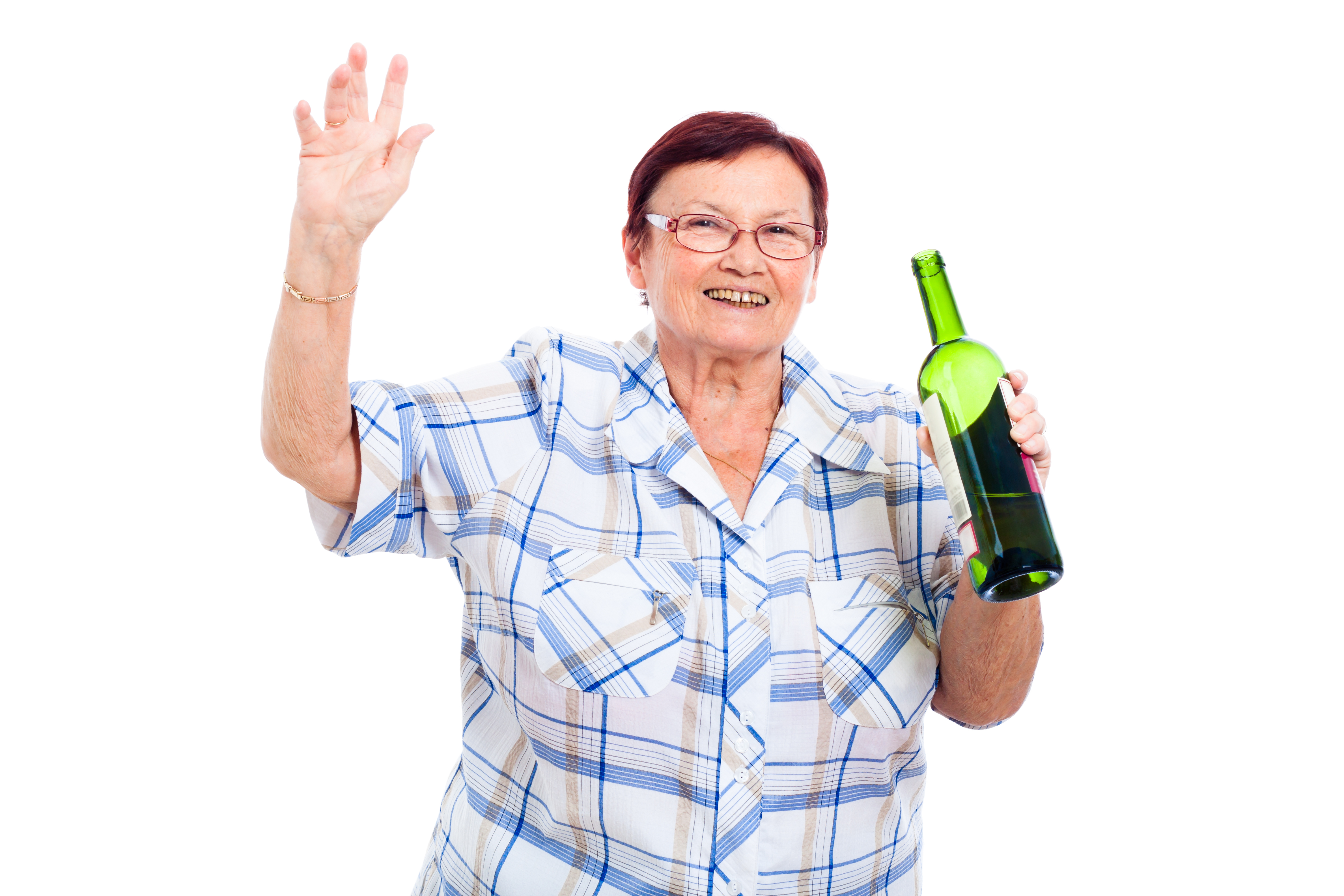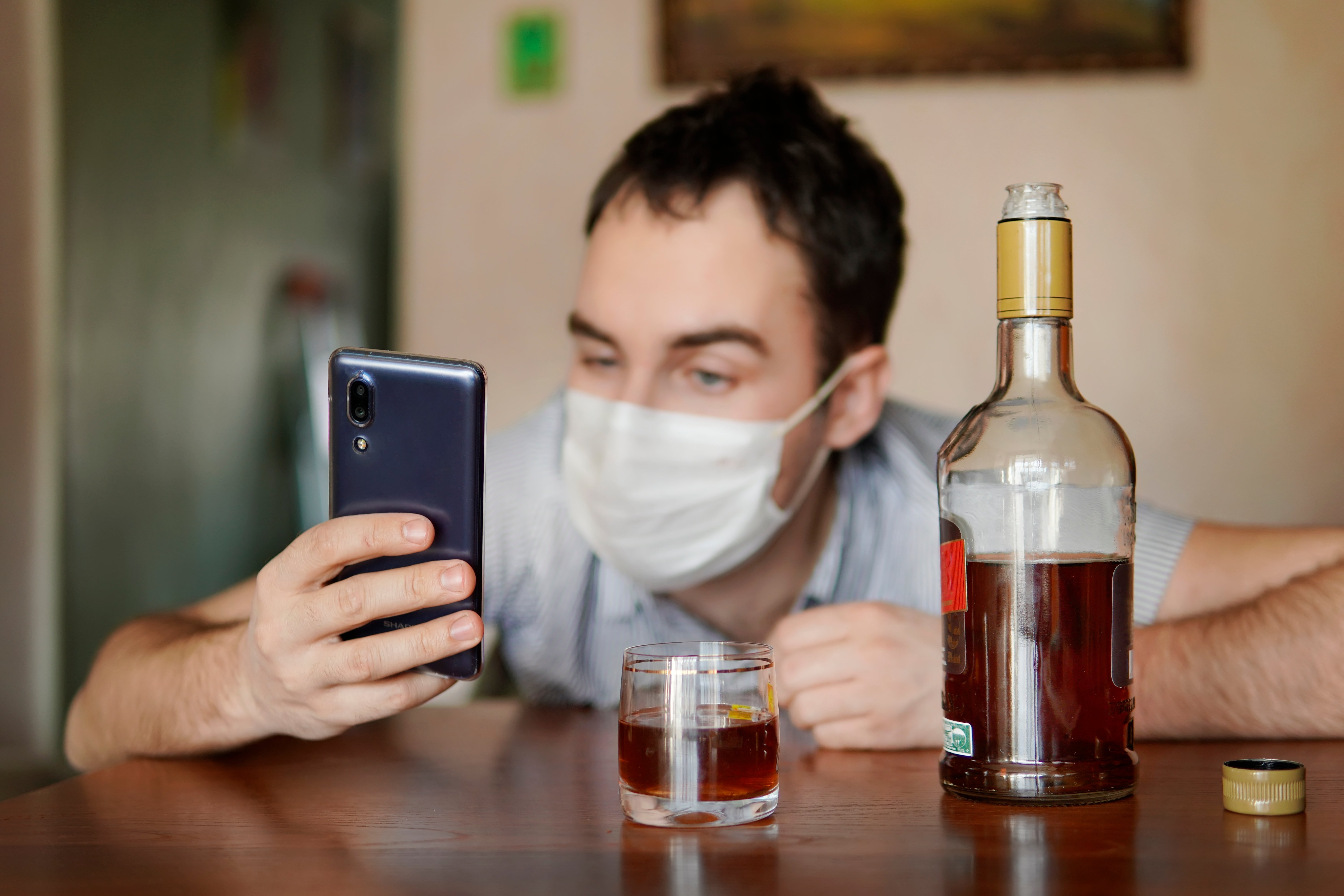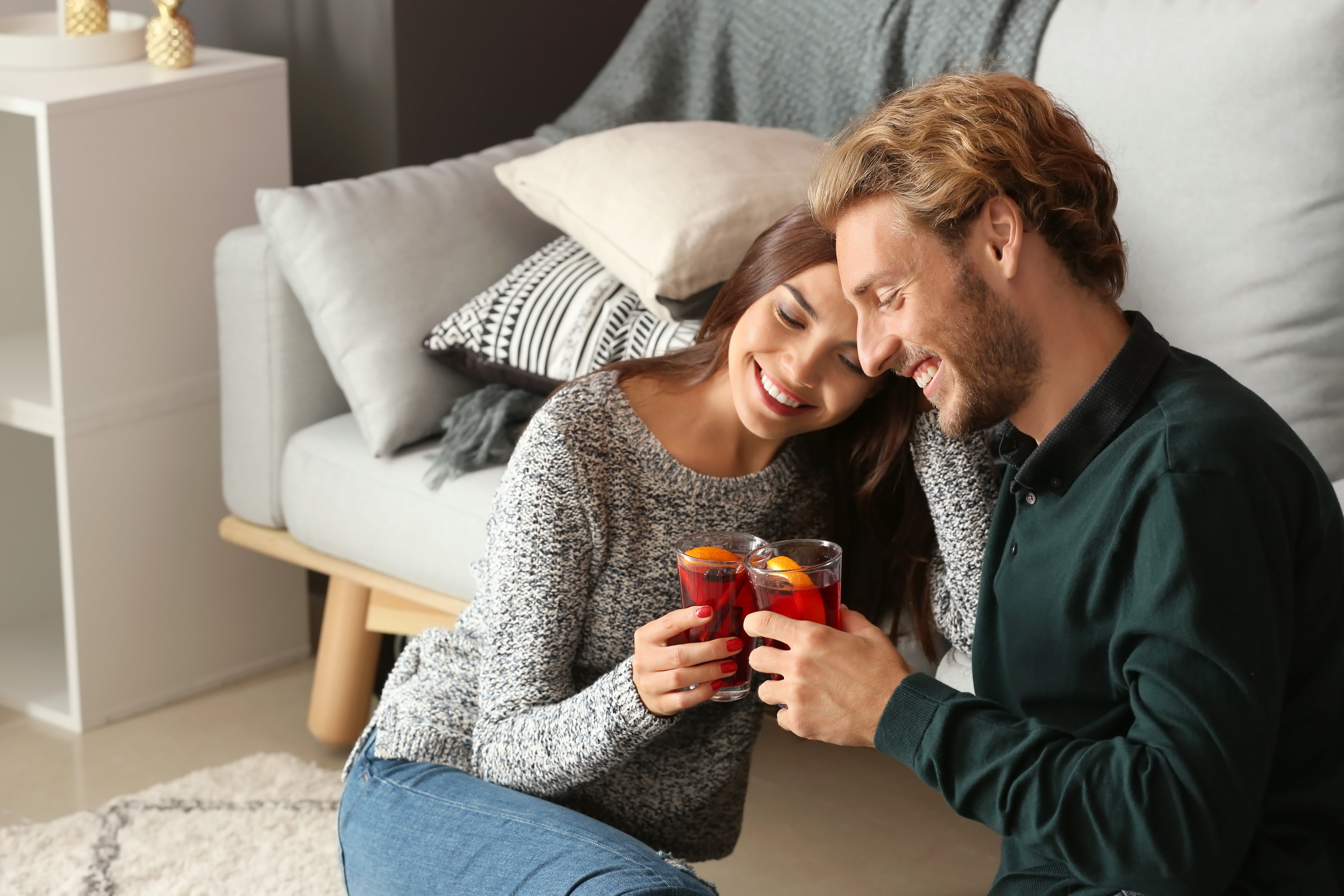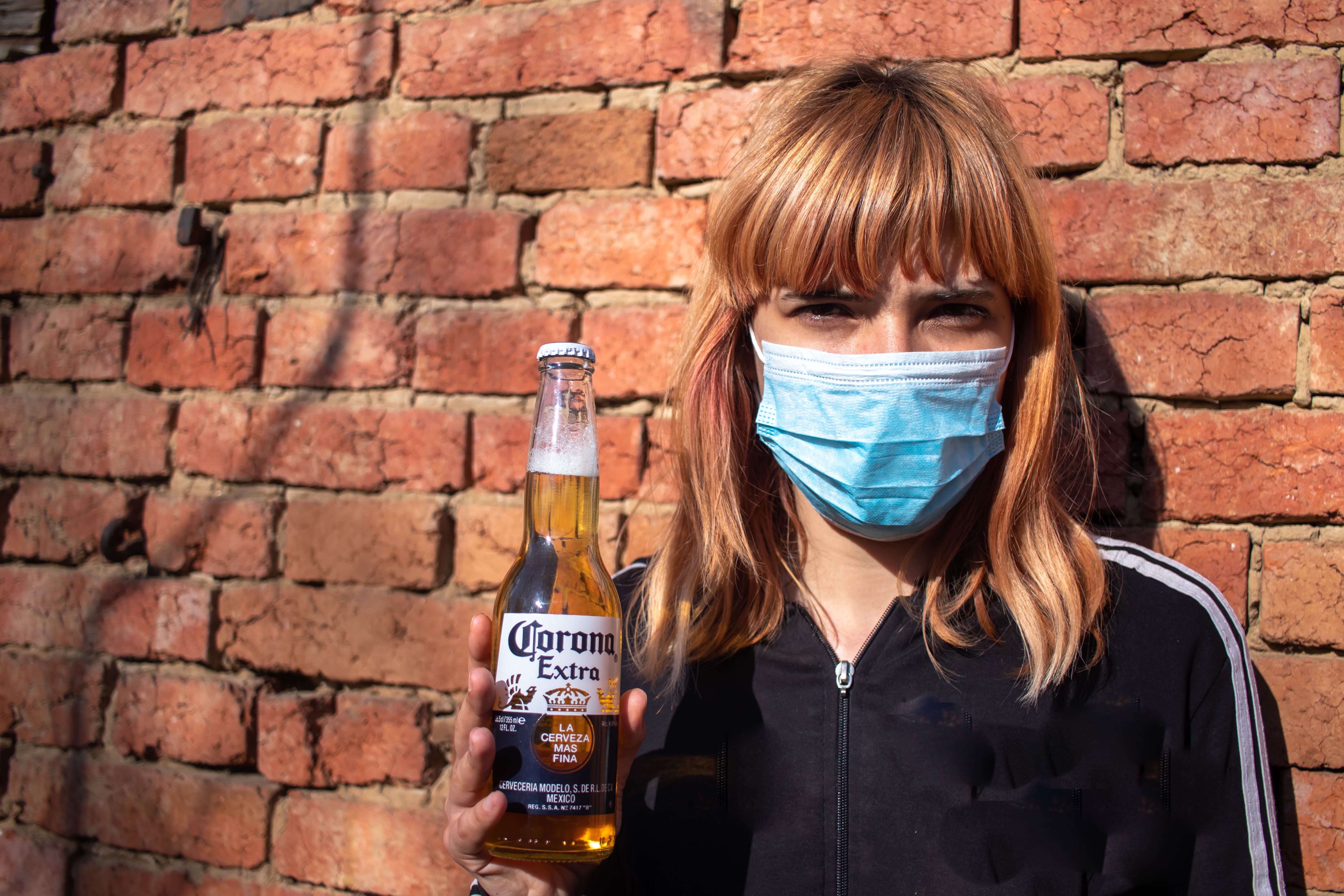This lockdown has made for some truly unexpected sights. I never thought I’d see South Coast Plaza’s parking lot entirely empty on a Sunday afternoon, or SoCal’s beaches deserted on the first hot day of the year. But here we are.
Also on the list of things I never thought I’d see: My ninety-year-old grandmother and her three sixty-five-and-older children participating in a family Zoom chat. Yet, after weeks of tech support from their respective children (I spent twenty agonizing minutes on the phone helping my mom find the @ sign on an iPhone keyboard), my entire family now gathers each Tuesday at 5pm for our weekly family check in. Focal points and discussion topics shift week-to-week, just like our moods, but one thing stays the same: Generally around the 15-minute mark, we all pour remote tequila shots, raise our glasses to our webcams, and have a family salud. And then another. And then, oftentimes, another.
As your humble blogger discussed a couple of weeks ago, alcohol sales have been surging during the coronavirus lockdown, and TrendSource’s recent market research data suggests the spike is not flattening. This isn’t just a matter of moving formerly on-premise purchases off-premise to the home, people are drinking materially more than they did before. Here, we will explore recent alcohol industry news and TrendSource’s data, encourage manufacturers and retailers to consider launching specific marketing campaigns, and monitor and forecast the most recent industry and category trends.
But let’s make this quick, my grandmother will be signing on to Zoom at 5PM sharp.
TrendSource Market Research Data: Alcohol Consumption is Up

Whether it’s boredom, anxiety, or something else, the lockdown is making people drink more. We’d known at-home sales were up, but that doesn’t speak to consumption patterns. With TrendSource’s most recent alcohol industry market research, we can say confidently that people are drinking more.
According to the survey, which ended last Friday:
- A staggering (and likely-staggered) 37.6% of respondents reported they have increased their alcohol consumption under lockdown
- 50.8% have maintained their consumption pattern despite the shift in circumstances
- 11.6% have decreased slowed or halted their alcohol intake
Let’s spell that out again because, wow, it sure does bear repeating: More than one-third of all respondents report increasing their alcohol consumption since the outbreak of COVID-19, 88.4% have either maintained or increased it, and only 11.6% have decreased it.
That’s an enormous increase among the drinking public and a minuscule decrease. It’s not just alcohol, of course, as vices of all shapes and sizes are on the rise--Forbes summed it up rather nicely: “People are consuming more alcohol, smoking weed, playing video games, eating a lot of junk food, binge-watching Netflix and adult films more than ever before.”
Our data on alcohol is backed up by other emerging reports. According to an alcohol addiction resource center, one-third of people reported they were more likely to drink alone while under lockdown than they were before. What for many had been primarily or even exclusively a social activity has now become, like so much else, remote and private. Sure people drink in their Zoom happy hours, which is kind of like drinking alone but not really, yet there is also an increase in people sitting alone on their couch alone and drinking a bottle of wine while watching Jesus Christ Superstar (ok, that last part was just me).
Regardless, drinking without companions or an occasion feels indulgent and unhealthy perhaps, but it is becoming the new normal for many people. The Finnish even have a word for this, kalsarikännit, which translates into pantsdrunk. You know what we mean, right? The kind of occasion-less drinking on the couch in sweatpants while making curious entertainment and online retail decisions. So, people are drinking more than normal and they are doing it alone more than before.
Additional data keeps coming from everywhere. Drizly, a popular alcohol delivery platform, saw sales increase 461% over expectation, with people drinking earlier in the week, earlier in the day, and more often in general. Similarly, in the first week of quarantine, our very own San Diego, CA saw an insane surge according to BACTrack data: Drinking was up every day after lockdown, with an 88% increase on Tuesday alone. And it’s not just stateside either, there are similar numbers coming out of England.
So while before TrendSource was cautioning to not read too much into a momentary alcohol sales surge, and we remain skeptical about the trickle down effect for smaller labels, we now feel comfortable saying that people are drinking their way through the pandemic and will likely continue to do so, even against experts’ advice (more on that later).
Alcohol Brands on Radio Silence, Need Marketing and Advertising Market Research

So, it’s not just that at-home consumption is up, it’s that consumption is up writ large for a large swath of the population. Yet despite this surge in sales, and the fact that bad news has historically been good news for booze makers, alcohol manufacturers have yet to aggressively market their products to a locked down culture and society. I have yet to see new campaigns speaking directly to people in a pandemic, please tell me if I’m wrong.
This makes sense. First, with facts and opinions (and feelings and fears) all shifting so quickly, it’s tough to strike the right marketing note, much less strike it for a sustained period of time. Second, for many manufacturers, business is already booming--why risk rocking the appletini cart when it’s already on a roll?
But we think this is ultimately an excess of caution; alcohol manufacturers and retailers should be working to craft coronavirus-specific campaigns. Sure, sandwiching commercials between daily COVID-19 press briefings, the 24-hour news cycle, and escapist fare like the new Michael Jordan documentary (watch it!) is a tough order. But maybe not as tough as you think. Consider:
- You know people are drinking more. Our numbers and everybody else’s are telling you so.
- You know you are reaching consumers directly in their homes because, well, that’s where everybody is right now.
- You understand and empathize with consumers now more than ever because, however different we all are, we are all feeling a lot of the same things: fear, boredom, frustration, anxiety, cabin fever, etc.
- Understanding that people are engaging with each other and your product on an emotional level, messaging about maintaining personal connections despite the pandemic will likely resonate with the vast majority of people. Ditto nostalgia.
- As we’ve previously discussed, authenticity is more important than ever...and that was before the pandemic. Choosing your messaging, tone, and content carefully is only possible with marketing and advertising market research. Whether you do it on your own or hire a specialist, campaigns must be conceived and rapidly incubated with the kind of care and consideration only market research can provide.
We’ll say it simply: For alcohol manufacturers and retailers, now is the time to utilize marketing market research.

COVID-19 Alcohol Industry Market Research: Peculiar Trends Afoot
Keeping abreast of the latest alcohol trends is also paramount. For example, before coronavirus, alcohol purchases had been moving away from caloric and alcohol density, favoring lighter drinks like hard seltzer and session ales. The lockdown has interrupted this.
Beer, it seems according to recent data, is the preferred beverage during work hours, which your humble blogger can neither confirm nor deny. Also, according to alcohol delivery service Drizzly, the category with the biggest spike since lockdown has been sweet, namely liqueurs, cordials, mixers, syrups, and bitters. None of those things sugary mixers are remotely light, nor is the hard alcohol they are mixing with.
Beyond speaking to shifting tastes, this data also suggests work to be done in product development and sales: At-home bar kits, replete with mixers and the like, feel like a no-brainer right now.
Other peculiar alcohol trends abound, some more easily explained than others. Sparkling wines like champagne, prosecco, and cava are all way down according to Minibar, another alcohol delivery service. For consumers, bubbly connotes celebration and these are just not celebratory times. Minibar also reports they are selling more Corona beer than ever before, so at least the pandemic hasn’t wiped away our morbid sense of humor.

And, as we’d previously theorized, cheaper alcohol options are way up. This includes box wine, which nobody has ever denied is super efficient (it’s four whole bottles’ worth), as well as cheap beer (think: Keystone and Busch).
While fascinating on many levels, this data is especially important for manufacturers and retailers looking to precisely hone their campaigns to this particular moment. Understanding what people want and how they are getting it is key.
Surrounded by Risks to Their Health, Consumers Find Excuses to Be Unhealthy
As before, we must also acknowledge the risks to public and personal health that alcohol consumption represents, in general and especially in this particular moment.
This is a pressing enough issue that the WHO recently released guidelines cautioning against alcohol consumption: "At times of lockdown during the COVID-19 pandemic, alcohol consumption can exacerbate health vulnerability, risk-taking behaviours, mental health issues and violence." The organization further suggested that restricting access to alcohol may be in states’ best interest.
For people who consume it, that’s tough to read; for companies that make and sell it, it is even tougher. But consumers have consistently proven to choose vice over safety, from nicotine to alcohol and everything this side of heroin. Risks to personal health are not the strongest deterrents from vice.
Beyond the immediate risks from COVID-19, public health officials are also worried about the increased risk of domestic violence, addiction relapse, and the fact that many non-problem drinkers are likely developing alcohol habits under lockdown that will be difficult to wind back. All of these concerns are real and they should frighten us. I will never attempt to make light of any of this.
But then there is the common retort, made most eloquently by Rebecca Jennings in Vox: “What about the fact that wine is delicious? What about the fact that it makes me feel better, as do pumpkin muffins?“ As Jennings points out, “In protecting ourselves from a potentially deadly virus, we’ve found other excuses for unhealthiness.”
Whatever the vice, whatever the excuse, we’re all probably doing it in some way or another. And today mine is a family Zoom call. Maybe this is rationalizing or bargaining or some other stage in the process of grief, but whatever it is, it is starting at 5pm and I got a new bottle of Centenario just for the occasion. Salud.


